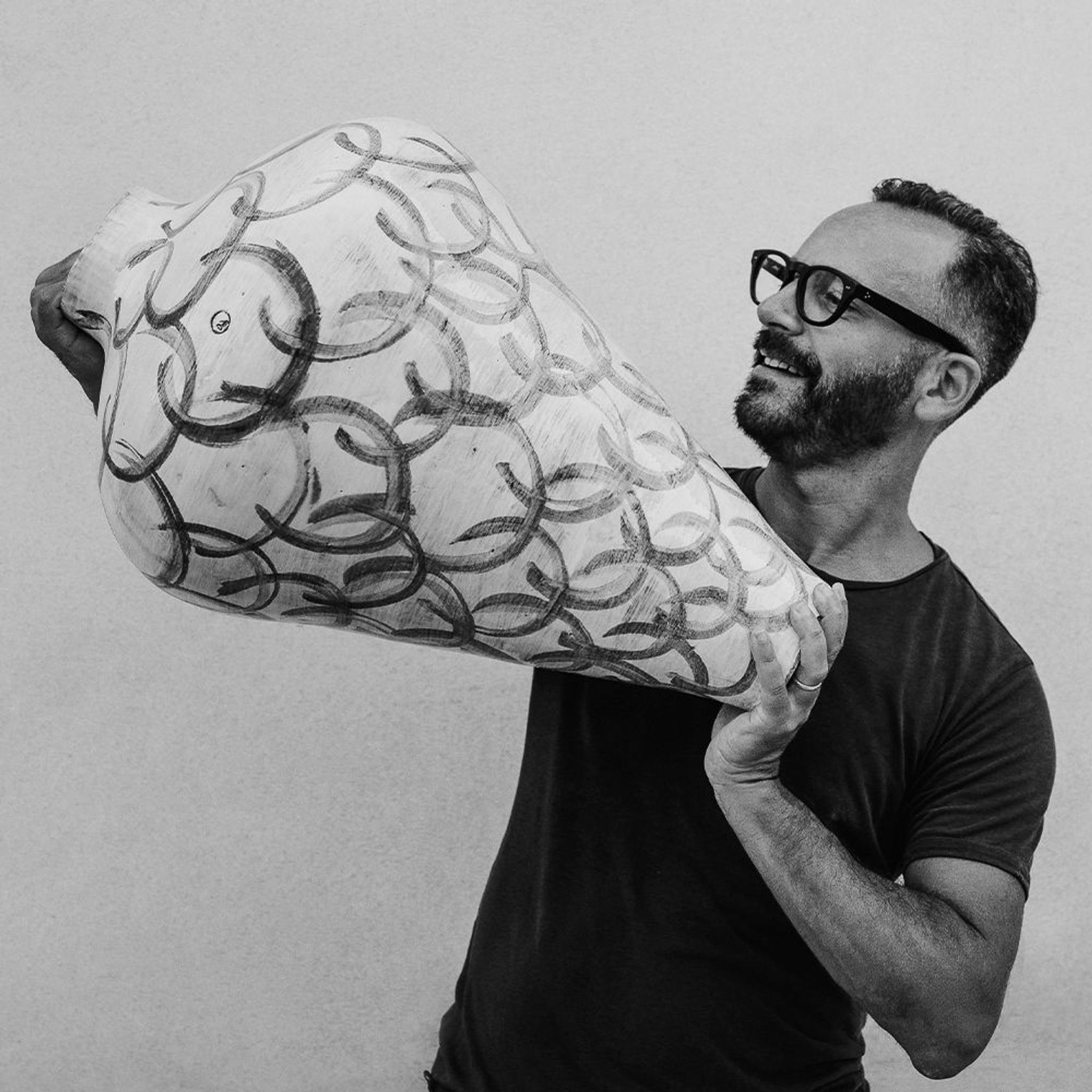
Brown Dark & Light Circles Vase
USD 2,145
Ships in 6-7 weeks
Born in Salerno on May 26, 1977, Onofrio Acone embarked on an entrepreneurial journey in design and furniture in 1997. His early years in his parents' ceramic workshop ignited a profound passion for creativity. Despite its transformation into an industrial enterprise, Onofrio remained committed to crafting sculptures, vases, and paintings by hand, employing rudimentary techniques that resonate with raw emotion. In 2022, his long-held dream materialized with the opening of a gallery, where each piece reflects a unique idea realized through his skilled hands, often using simple tools and natural elements: pieces of wood to forge the various types of clay used, cloth with which to imprint textures, pieces of metal to cut with imperfect precision the sheets of matter before finally shaping them with the hands.
Perfect Imperfections, hand molded works exclusively in ceramic, unique and non-reproducible, inimitable

Born in Salerno on May 26, 1977, Onofrio Acone has been an entrepreneur since 1997 in the field of design and furniture, a restaurateur since 2005 and founder of CINQUESEGNI in 2008.
He is lucky enough to take his first steps in the ceramic workshop founded by his parents in 1982 in the garage of their home in the province of Salerno. Having grown up in that workshop where he breathed all the creativity of a small craft workshop of those years, a passion for this incredible material with a thousand potentials was born in him from the very beginning and he developed his creativity from an early age.
In the family workshop since the early 1990s, Onofrio has developed his techniques as a self-taught artist following the instinct of his creativity.
Most of his pieces are made with rudimentary techniques and equipment, which are sometimes even found among makeshift items or elements of nature: pieces of wood to forge the various types of clay used, fabrics that he uses to imprint textures with, pieces of metal to cut with imperfect precision the sheets of material before finally shaping them with his hands.
The glazing techniques used are also the most basic: few colors, a predominance of bases of different white glazes, typical of the Amalfi Coast, applied with natural sponges or even fingers.
Each piece is to be considered unique and unrepeatable because each one is made following the inspiration of that moment both in shaping it and in giving it color.

USD 2,230
Ships in 1 week

USD 2,230
Ships in 1 week

USD 975
Ships in 1 week

USD 700
Ships in 1 week

USD 700
Ships in 1 week

USD 700
Ships in 1 week

USD 700
Ships in 1 week

USD 700
Ships in 1 week

USD 700
Ships in 1 week

USD 2,230
Ships in 1 week

USD 2,230
Ships in 1 week

USD 535
Ships in 5-6 weeks

USD 1,610
Ships in 5-6 weeks

USD 1,095
Ships in 5-6 weeks

USD 535
Ships in 5-6 weeks

USD 1,340
Ships in 5-6 weeks

USD 2,190
Ships in 6-7 weeks

USD 1,640
Ships in 6-7 weeks

USD 2,145
Ships in 6-7 weeks

USD 1,640
Ships in 6-7 weeks